Fall armyworm, scientifically known as Spodoptera exempta, is huge threat to maize and other cereal crops like sorghum, wheat, groundnut, soybean, including potatoes. This pest has ravaged many cereal farms across the globe, particularly maize. According to CABI 2017, Fall armyworm accounted for about USD 13.38 billion loss in maize production in African countries.
Several measures have been put in place to control and eradicate fall armyworm but seem very difficult because of their polyphagous nature. I implore you to read this article to the last word as it broadly describes fall armyworm and how you can control them chemically, organically, and biologically.
Read up…
Description Of Fall Armyworm
The fall armyworm moths lay up to 250 eggs in clusters under the lower leaves or at the base of the plants. The eggs are tiny, globular and greenish white in color. Fall armyworm undergoes a complete metamorphosis, that is, it has four stages of growth; namely: embryo, larva, pupa, and imago or adult.
The larva or caterpillar is the most destructive and reputed for destroying maize plants, irrespective of the size of the maize plant. As seen in the picture above, the armyworm larvae is a small worm of about 1.5 inches. It has a greenish-brown body with tiny orange colored strips arranges on both sides of its body; the head is usually brown with dark marks.
The armyworm larvae move within a maize plant or from one maize lan to another by burrowing deep into the stem or cobs of emerging maize plant. Fall armyworm feed on the sap and leaves of the maize plants; their feeding on the maize sap reduces the vigour of the plant, making it to wilt and die off. Similalry, feeding on maize leaves reduces the photosynthetic activities.
The pupa, practically harmless, is encapsulated in a brown earthen shell and stays below the soil surface. The imago or adult is approximately one (1) inch long with one and half (1.5) inches wingspan. It is usually tan to light brown in color with tiny white spots on each side of the wings.
Lifecycle Of Fall Armyworm
Fall armyworm moths (adult) are ubiquitous but innocuous; they are active during the evening, they hide in grassy vegetation during the day. All they do is to feed on nectars, mate and search for places to lay their eggs (oviposition), usually at the back of host leaves; they lay up to 1000eggs in their lifetime.
The moths lay their eggs in clusters at the back of their host plant usually grass weeds or cereal crops; after laying, the moth rolls the leaf blade of the plant around the laid eggs. The eggs hatch in about 5-10 days into larvae, the second stage of development.
This larval stage is the most destructive stage; this is where farmers have sleepless nights. The newly hatched larvae, also called caterpillars, are pale green in color and move in a looping motion. They are active at night and feed on the host plants; they feed voraciously on the plants. The fall armyworm larvae damage the plants by chewing the leaves; they prefer to feed on the succulent leaves in the whorl first, in case of a maize plant. They feed majorly on the leaf margin but in severe invasion, they can devour the whole plant.
Towards the end of the third week, the larvae burrow into the soil to pupate, that is, the end of the larval stage and the commencement of the pupa stage. The pupae remain inside the soil for about 7-10 days after which they develop into imago or adult.
The adult, therefore, migrates from their site of emergence to where they lay another set of eggs (oviposition). The adult feeds for about 10 days before the commencement of lay; about 3 generations can emerge in a year. The first generation occurs around March and May, the second generation emerges in July and third generation surfaces late August.
How Fall Armyworm Damage Maize Plants
The fall armyworm larvae or caterpillar is the main threat to maize plants because they feed subtly on the leaves and burrown into the stem and cob to suck the sap; they are not easily noticed. The larvae is prevalent during the rainy season, especially after a long drought, usually March to April. Fall armyworms show no prior signs, just the damage is seen.
Fall armyworm larvae consume leaf tissue and at times, they chew the maize leaves. In severe cases, the larvae may strip the leaf margin and move up to feed on the panicles and floral parts. Fall armyworm larvae also feed on plants’ flag leaves (a leaf on a cereal plant next to the inflorescence, kernels and succulent stems. The damages caused by fall armyworm to maize plants are:
- Poor leaf formation
- Poor growth as a result of reduced photosynthetic activities
- Premature death of maize plant
- Reduction in the quality and quantity of maize
- Loss of investment
- Increase in cost of production
The maize plant may survive moderate fall armyworm damage if the growing point has not been damaged. Spraying pesticides is not economical because the damage has been done. However, if their emergence has been noticed earlier, when the larvae just hatched, pesticides can be applied to get rid of them.
How To Control Fall Armyworm
Controlling fall armyworm in a maize farm is very technical because this pest doesn’t show prior signs to their infestation; most times, farmers are always agape at their damage. However, there are practices farmers can implement to reduce the menace of fall armyworm. The following are the ways fall armyworm can be controlled:
- Planting during the offseason: Offseason is the period at which these pests are inactive and dormant. It is usually during the dry season around October and February. During this period, you can plant without any menace. But you need to supply water in form of irrigation for your plants only.
- Adopting conventional tillage practice: Fall armyworm resides in grassy vegetation; they are more rampant when reduced tillage or zero tillage is adopted. Conventional tillage practice eradicates all grasses and weeds on the field, leaving no room for fall armyworm moths to lay their eggs. Also, the soil is pulverized such that the moths are exposed to unfavorable conditions, thus, expelling the moths and preventing them from laying eggs.
- Scouting: This is applicable when you adopt a conventional tillage system. This is the close and selective observation done on few plants chosen at random on the field. Look at the ground for fall armyworm during the day; check the topsoil for fall armyworm or their black pepper-like droppings littering the ground.
- Use of organic pesticides: Use neem oil, it is very effective on various stages of the fall armyworm growth. It repels pests greatly. You can as well use inorganic pesticides but you need to consider the size of the fall armyworm larvae before applying; apply inorganic pesticides only when the worms are 0.5 inch long, this can be achieved during scouting.
- Use of insecticides: Newly hatched fall armyworm larvae can be controlled using armyworm insecticides like Emamectin benzoate + Lufenuron 50 WG, Cartap hydrochloride 50 SP, Flubendiamide-based insecticides like Fluben, Indoxacarb-based insecticides like Avaunt, Carbaryl 85 WP.
- Use oil trap: This is done when you place organic oil like groundnut oil in a flat container in the furrow or at the base of your plants. The fall armyworm moth and larvae get trapped in it, thus, mitigating their destructive effects.
- Use of beneficial insects to control fall armyworm: This is called biological pest control. Insects such as lacewing and ladybugs all feed on fall armyworm eggs as well as the newly hatched larvae. Trichogramma wasps also prey on fall armyworm; they parasitize any newly laid eggs by inserting their eggs, thus, killing the eggs before they hatch into larvae. These insects can be purchased online.
- Use of beneficial nematodes: Steinernema feltiae, and other beneficial nematodes are soil creatures that disrupt the lifecycle of insects by feeding on each developmental stage, eggs, larvae, and pupae. They are harmless to humans and plants; they feed majorly on fall armyworm eggs, larvae and pupae found in the soil. They can also be purchased online.
Lastly, fall armyworm damage is a serious threat to maize production in the world. Its outbreak is becoming more pronounced in the US and African countries. Drastic attention needs to be given to this pest because it can greatly reduce the world production of cereal crops, especially maize.
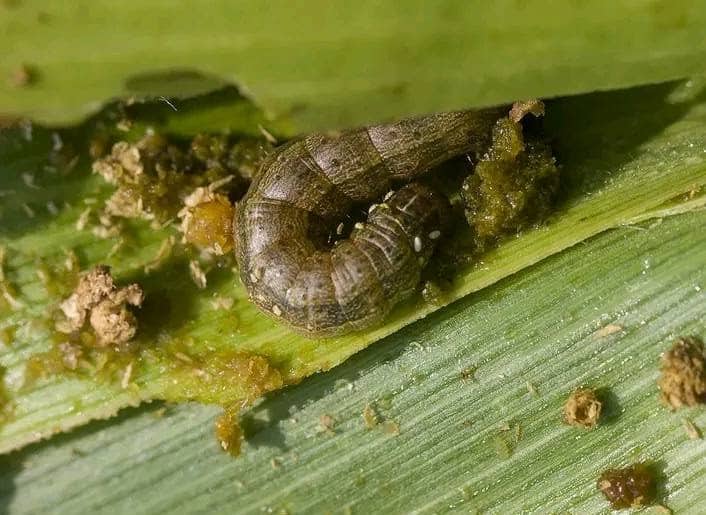
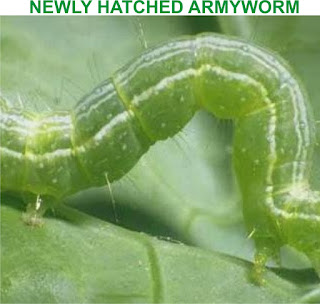

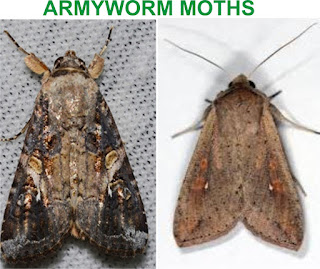
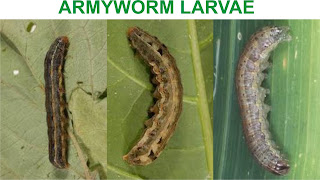
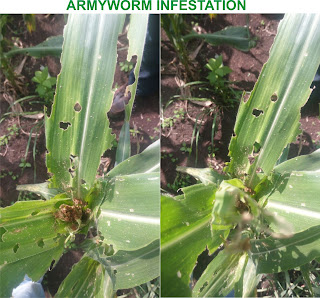
Very educating write up. Kudos. Am currently doing a research on the control of armywom using different neem formulations.